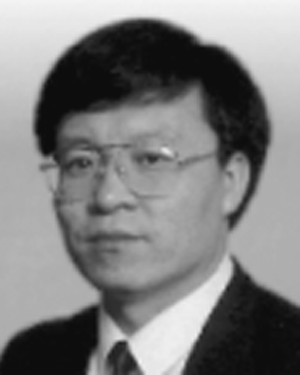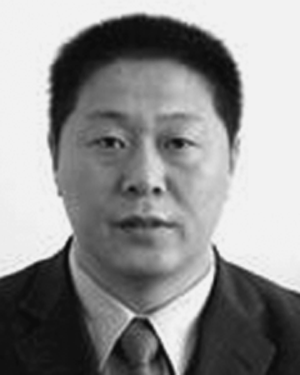Abstract:
The major challenges that sign language recognition (SLR) now faces are developing methods that solve large-vocabulary continuous sign problems. In this paper, transition...Show MoreMetadata
Abstract:
The major challenges that sign language recognition (SLR) now faces are developing methods that solve large-vocabulary continuous sign problems. In this paper, transition-movement models (TMMs) are proposed to handle transition parts between two adjacent signs in large-vocabulary continuous SLR. For tackling mass transition movements arisen from a large vocabulary size, a temporal clustering algorithm improved from k-means by using dynamic time warping as its distance measure is proposed to dynamically cluster them; then, an iterative segmentation algorithm for automatically segmenting transition parts from continuous sentences and training these TMMs through a bootstrap process is presented. The clustered TMMs due to their excellent generalization are very suitable for large-vocabulary continuous SLR. Lastly, TMMs together with sign models are viewed as candidates of the Viterbi search algorithm for recognizing continuous sign language. Experiments demonstrate that continuous SLR based on TMMs has good performance over a large vocabulary of 5113 Chinese signs and obtains an average accuracy of 91.9%
Published in: IEEE Transactions on Systems, Man, and Cybernetics - Part A: Systems and Humans ( Volume: 37, Issue: 1, January 2007)

Fujitsu Research and Development Center Company Limited, Beijing, China
Department of Computer Science, Harbin Institute of Technology, Harbin, China
Gaolin Fang received the M.S. and Ph.D. degrees in computer science from the Harbin Institute of Technology, Harbin, China, in 2000 and 2004, respectively.
From 2000 to 2004, he was a Research Assistant with the Joint R&D Lab, Chinese Academy of Sciences, Beijing, China. In 2003, he was a Visiting Research Assistant at Microsoft Research Asia, Beijing. Since 2004, he has been with the Fujitsu R&D Center, Beijing. He has pu...Show More
Gaolin Fang received the M.S. and Ph.D. degrees in computer science from the Harbin Institute of Technology, Harbin, China, in 2000 and 2004, respectively.
From 2000 to 2004, he was a Research Assistant with the Joint R&D Lab, Chinese Academy of Sciences, Beijing, China. In 2003, he was a Visiting Research Assistant at Microsoft Research Asia, Beijing. Since 2004, he has been with the Fujitsu R&D Center, Beijing. He has pu...View more

Institute for Computing Technology, Beijing, China
Wen Gao (s'88–M'99) received the M.S. and Ph.D. degrees in computer science from the Harbin Institute of Technology, Harbin, China, in 1985 and 1988, respectively, and the Ph.D. degree in electronics engineering from the University of Tokyo, Tokyo, Japan, in 1991.
In 1992, he was a Research Fellow with the Institute of Medical Electronics Engineering, University of Tokyo. In 1993, he was a Visiting Professor at the Robotic...Show More
Wen Gao (s'88–M'99) received the M.S. and Ph.D. degrees in computer science from the Harbin Institute of Technology, Harbin, China, in 1985 and 1988, respectively, and the Ph.D. degree in electronics engineering from the University of Tokyo, Tokyo, Japan, in 1991.
In 1992, he was a Research Fellow with the Institute of Medical Electronics Engineering, University of Tokyo. In 1993, he was a Visiting Professor at the Robotic...View more

Department of Computer Science, Harbin Institute of Technology, Harbin, China
Debin Zhao received the B.S., M.S., and Ph.D. degrees in computer science from the Harbin Institute of Technology, Harbin, China, in 1985, 1988, and 1998, respectively.
He has been an Associate Professor with the Department of Computer Science, Harbin Institute of Technology and a Research Fellow with the Department of Computer Science, City University of Hong Kong, Kowloon, from 1989 to 1993. He is currently a Professor w...Show More
Debin Zhao received the B.S., M.S., and Ph.D. degrees in computer science from the Harbin Institute of Technology, Harbin, China, in 1985, 1988, and 1998, respectively.
He has been an Associate Professor with the Department of Computer Science, Harbin Institute of Technology and a Research Fellow with the Department of Computer Science, City University of Hong Kong, Kowloon, from 1989 to 1993. He is currently a Professor w...View more

Fujitsu Research and Development Center Company Limited, Beijing, China
Department of Computer Science, Harbin Institute of Technology, Harbin, China
Gaolin Fang received the M.S. and Ph.D. degrees in computer science from the Harbin Institute of Technology, Harbin, China, in 2000 and 2004, respectively.
From 2000 to 2004, he was a Research Assistant with the Joint R&D Lab, Chinese Academy of Sciences, Beijing, China. In 2003, he was a Visiting Research Assistant at Microsoft Research Asia, Beijing. Since 2004, he has been with the Fujitsu R&D Center, Beijing. He has published more than 20 scientific papers. His research interests include intelligent human–machine interaction, statistical language models, pattern recognition, and machine learning.
Gaolin Fang received the M.S. and Ph.D. degrees in computer science from the Harbin Institute of Technology, Harbin, China, in 2000 and 2004, respectively.
From 2000 to 2004, he was a Research Assistant with the Joint R&D Lab, Chinese Academy of Sciences, Beijing, China. In 2003, he was a Visiting Research Assistant at Microsoft Research Asia, Beijing. Since 2004, he has been with the Fujitsu R&D Center, Beijing. He has published more than 20 scientific papers. His research interests include intelligent human–machine interaction, statistical language models, pattern recognition, and machine learning.View more

Institute for Computing Technology, Beijing, China
Wen Gao (s'88–M'99) received the M.S. and Ph.D. degrees in computer science from the Harbin Institute of Technology, Harbin, China, in 1985 and 1988, respectively, and the Ph.D. degree in electronics engineering from the University of Tokyo, Tokyo, Japan, in 1991.
In 1992, he was a Research Fellow with the Institute of Medical Electronics Engineering, University of Tokyo. In 1993, he was a Visiting Professor at the Robotics Institute, Carnegie Mellon University, Pittsburgh, PA. From 1994 to 1995, he was a Visiting Professor at the AI Laboratory, Massachussetts Institute of Technology, Cambridge. He is currently with the Institute of Computing Technology, Beijing, China. He is also the Vice President of the University of Science and Technology of China, Hefei; the Deputy President of the Graduate School of the Chinese Academy of Sciences, Beijing; a Professor of computer science with the Harbin Institute of Technology; and an Honor Professor of computer science with the City University of Hong Kong, Hong Kong. He is also the Head of the Chinese National Delegation to the MPEG Working Group (ISO/SC29/WG11). He has published seven books and more than 200 scientific papers. His research interests include signal processing, image and video communication, computer vision, and artificial intelligence. He is the Editor-in-Chief of the Chinese Journal of Computers.
Dr. Gao was the General Cochair of the IEEE International Conference on Multimodel Interface in 2002.
Wen Gao (s'88–M'99) received the M.S. and Ph.D. degrees in computer science from the Harbin Institute of Technology, Harbin, China, in 1985 and 1988, respectively, and the Ph.D. degree in electronics engineering from the University of Tokyo, Tokyo, Japan, in 1991.
In 1992, he was a Research Fellow with the Institute of Medical Electronics Engineering, University of Tokyo. In 1993, he was a Visiting Professor at the Robotics Institute, Carnegie Mellon University, Pittsburgh, PA. From 1994 to 1995, he was a Visiting Professor at the AI Laboratory, Massachussetts Institute of Technology, Cambridge. He is currently with the Institute of Computing Technology, Beijing, China. He is also the Vice President of the University of Science and Technology of China, Hefei; the Deputy President of the Graduate School of the Chinese Academy of Sciences, Beijing; a Professor of computer science with the Harbin Institute of Technology; and an Honor Professor of computer science with the City University of Hong Kong, Hong Kong. He is also the Head of the Chinese National Delegation to the MPEG Working Group (ISO/SC29/WG11). He has published seven books and more than 200 scientific papers. His research interests include signal processing, image and video communication, computer vision, and artificial intelligence. He is the Editor-in-Chief of the Chinese Journal of Computers.
Dr. Gao was the General Cochair of the IEEE International Conference on Multimodel Interface in 2002.View more

Department of Computer Science, Harbin Institute of Technology, Harbin, China
Debin Zhao received the B.S., M.S., and Ph.D. degrees in computer science from the Harbin Institute of Technology, Harbin, China, in 1985, 1988, and 1998, respectively.
He has been an Associate Professor with the Department of Computer Science, Harbin Institute of Technology and a Research Fellow with the Department of Computer Science, City University of Hong Kong, Kowloon, from 1989 to 1993. He is currently a Professor with the Department of Computer Science, Harbin Institute of Technology. He has authored or coauthored more than 50 publications. His research interests include data compression, image processing, and human–machine interface.
Debin Zhao received the B.S., M.S., and Ph.D. degrees in computer science from the Harbin Institute of Technology, Harbin, China, in 1985, 1988, and 1998, respectively.
He has been an Associate Professor with the Department of Computer Science, Harbin Institute of Technology and a Research Fellow with the Department of Computer Science, City University of Hong Kong, Kowloon, from 1989 to 1993. He is currently a Professor with the Department of Computer Science, Harbin Institute of Technology. He has authored or coauthored more than 50 publications. His research interests include data compression, image processing, and human–machine interface.View more


